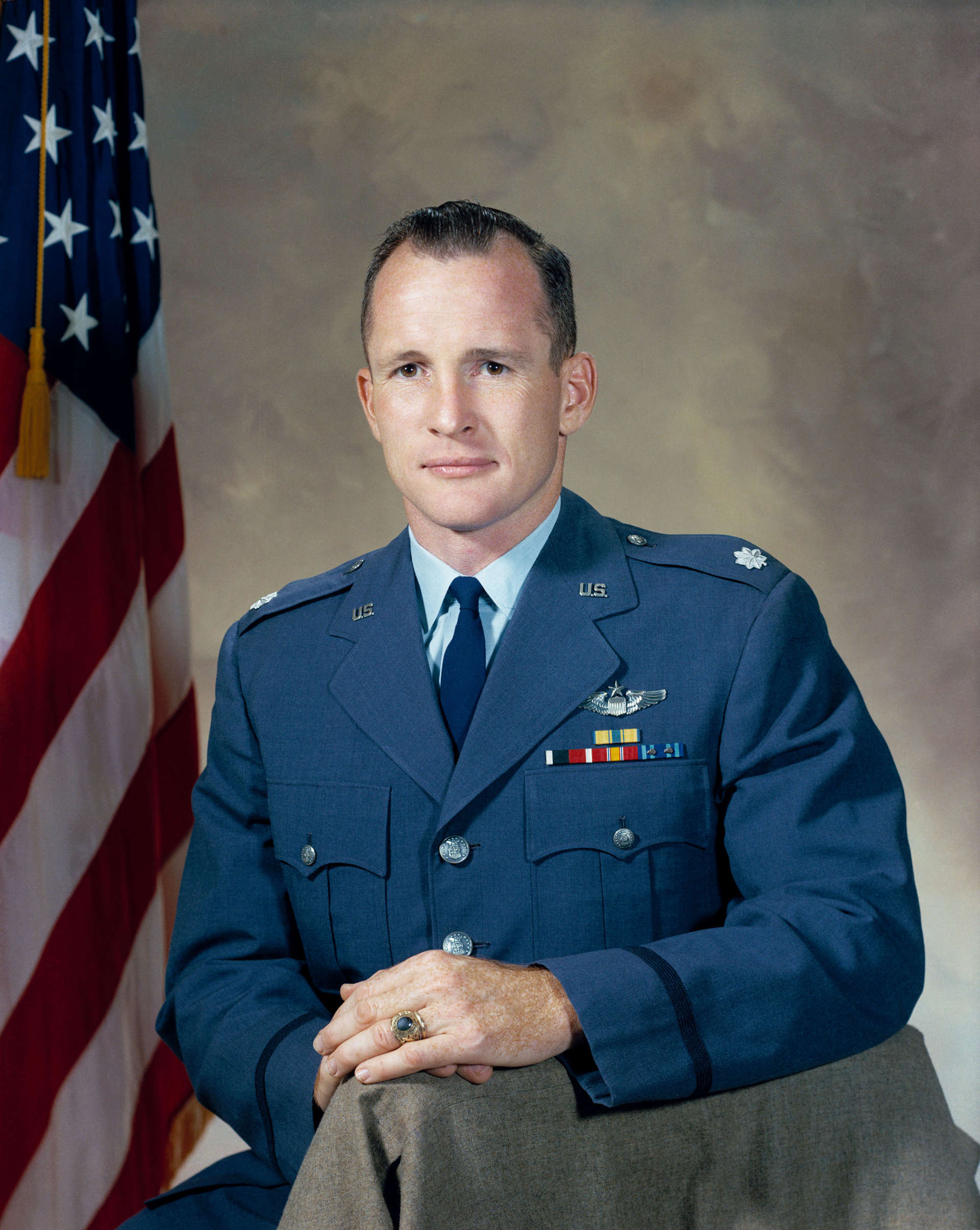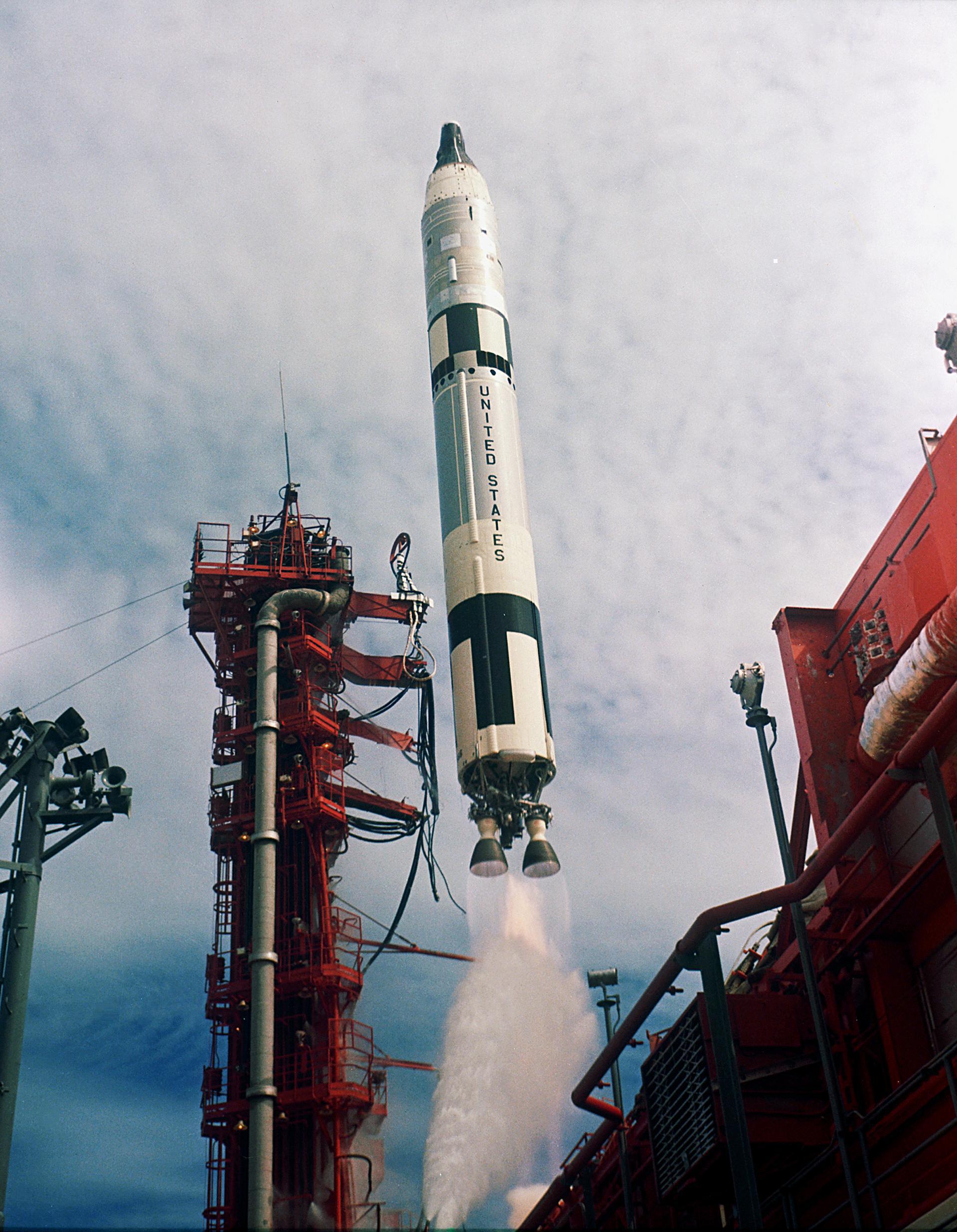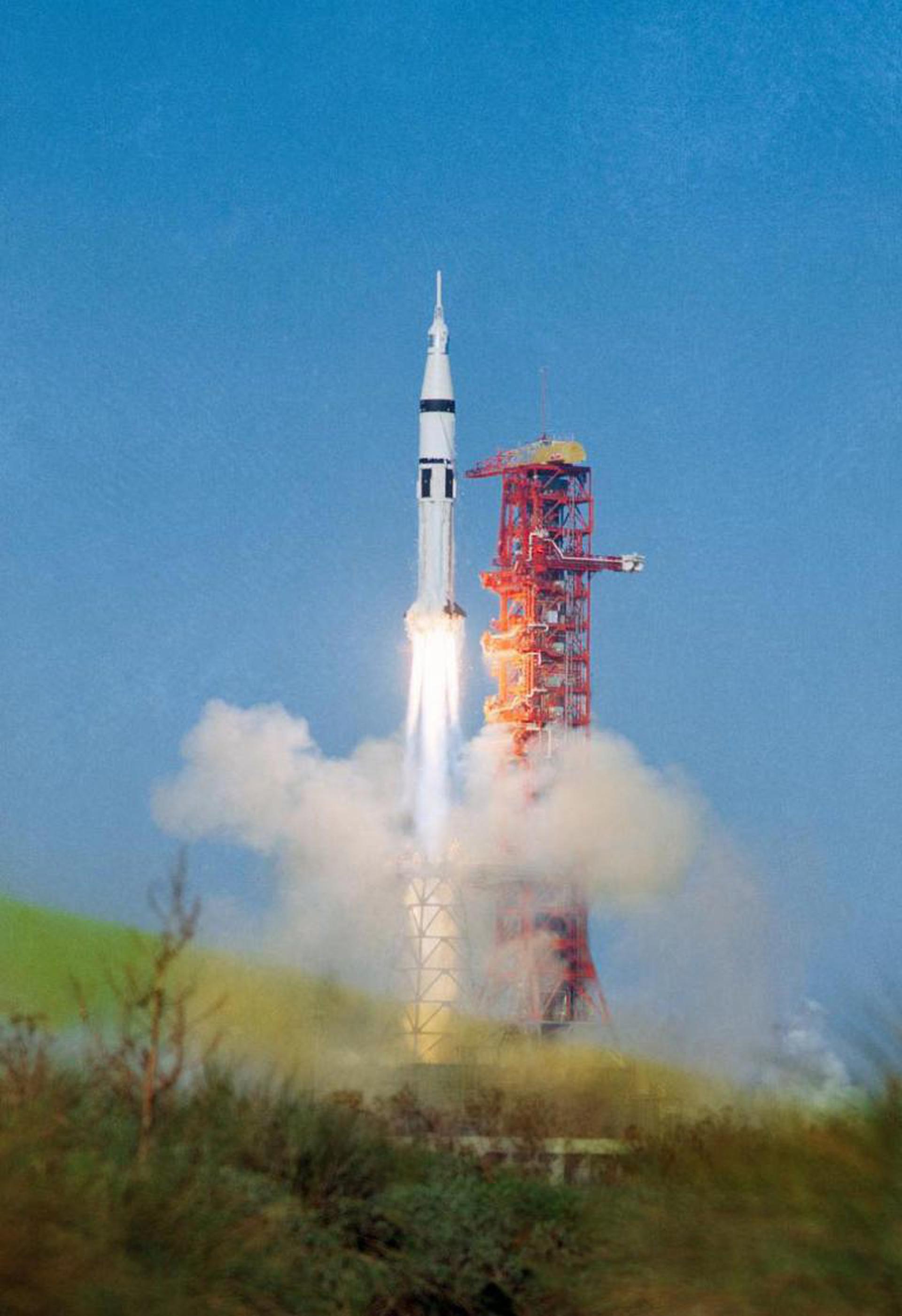Ed White
American - (NASA)
Lost In Training
Date of Birth: Nov. 14, 1930
Date of Death: Jan. 27, 1967
Edward Higgins White II was an American aeronautical engineer, U.S. Air Force officer, test pilot, and NASA astronaut. On June 3, 1965, he became the first American to walk in space. White died along with astronauts Virgil "Gus" Grissom and Roger B. Chaffee during prelaunch testing for the first manned Apollo mission at Cape Canaveral. He was awarded the NASA Distinguished Service Medal for his flight in Gemini 4 and was then awarded the Congressional Space Medal of Honor posthumously.
Titan II GLV | Gemini IV
National Aeronautics and Space Administration | United States of AmericaCape Canaveral SFS, FL, USA
June 3, 1965, 3:16 p.m.
Status: Success
Mission:
Gemini 4 was the second crewed mission of the NASA's Project Gemini. The mission was commanded by Command Pilot James A. McDivitt and Pilot Edward H. White II. On the mission, White became the first American to perform a spacewalk. The mission began on June 3, 1965, 15:15:59 UTC and ended on June 7, 1965, 17:12:11 UTC.
Low Earth OrbitSaturn IB | Apollo 1 (Failure before launch)
National Aeronautics and Space Administration | United States of AmericaCape Canaveral SFS, FL, USA
Jan. 27, 1967, 11:31 p.m.
Status: Failure
Mission:
Apollo 1, initially designated AS-204, was the first crewed mission of the United States Apollo program, the undertaking to land the first man on the Moon. It was planned to launch on February 21, 1967, as the first low Earth orbital test of the Apollo command and service module. The mission never flew; a cabin fire during a launch rehearsal test at Cape Kennedy Air Force Station Launch Complex 34 on January 27 killed all three crew members—Command Pilot Gus Grissom, Senior Pilot Ed White, and Pilot Roger B. Chaffee—and destroyed the command module (CM). The name Apollo 1, chosen by the crew, was made official by NASA in their honor after the fire.
Low Earth OrbitThe National Aeronautics and Space Administration is an independent agency of the executive branch of the United States federal government responsible for the civilian space program, as well as aeronautics and aerospace research. NASA have many launch facilities but most are inactive. The most commonly used pad will be LC-39B at Kennedy Space Center in Florida.
Falcon 9
NROL-105
Space Launch Complex 4E - Vandenberg SFB, CA, USATwelfth batch of satellites for a reconnaissance satellite constellation built by SpaceX and Northrop Grumman for the National Reconnaissance Office …
Ceres-2
Demo Flight
Launch Area 95A - Jiuquan Satellite Launch Center, People's Republic of ChinaFirst test launch of Galactic Energy’s Ceres-2 rocket.
Long March 3B/E
Shijian 32
Launch Complex 2 (LC-2) - Xichang Satellite Launch Center, People's Republic of ChinaChinese experimental spacecraft of unknown purposes.
Ceres-1S
Tianqi 37-40
Rizhao offshore launch location - Haiyang Oriental Spaceport4 small satellites for LEO Internet of Things (IoT) communication purposes.
Long March 2C
AlSat 3A
Launch Area 94 (SLS-2 / 603) - Jiuquan Satellite Launch Center, People's Republic of ChinaEarth observation satellite built by China's CAST for the Algerian Space Agency.




